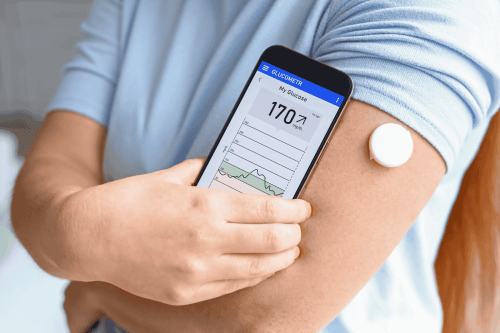By 2050, an alarming 61% of adults in the United States are projected to have some form of cardiovascular disease, according to a report published in the American Heart Association Journals. This statistic shows the urgency of early detection and proactive management to reduce the devastating impact of these conditions. Electrocardiograms (EKGs) are at the top of modern healthcare as indispensable diagnostic tools for identifying arrhythmias, heart attacks, and other cardiac disorders. For healthcare providers, mastering EKG interpretation goes beyond being a technical necessity—it is a critical skill that directly improves patient outcomes, facilitates timely decision-making, and fosters trust between providers, patients, and their families. In this blog, we delve into the power of EKG training, the essential skills healthcare professionals need, and strategies to excel in using this life-saving technology.
Core Skills Required for Mastery
Healthcare providers must acquire a blend of theoretical knowledge and practical expertise to excel in EKG interpretation. Below are the key skills essential for mastering EKG training:
Understanding EKG Basics

Before exploring more advanced EKG patterns, healthcare providers need to master the basics:
- How the Heart’s Electrical System Works: Learning how electrical signals move through the heart helps providers understand the waveforms seen on an EKG.
- Correct Placement of EKG Leads: Accurate placement of the 12 EKG leads is essential for reliable readings. Providers must know where to place each lead and how positioning affects the results.
- Understanding the Waveforms: Providers should be familiar with the key parts of an EKG tracing—the P wave, QRS complex, and T wave—and what each one reveals about heart function.
Recognizing Normal vs. Abnormal Patterns
Recognizing the difference between normal and abnormal heart rhythms is a vital skill for healthcare providers. Here’s a breakdown:
- Normal Sinus Rhythm: This is the heart’s regular, steady rhythm, which serves as the baseline for comparison.
- Atrial Fibrillation: An irregular and chaotic rhythm in the upper chambers of the heart that can cause an uneven heartbeat.
- Ventricular Tachycardia: A dangerously fast rhythm that starts in the lower chambers of the heart and can be life-threatening.
- Myocardial Infarction (Heart Attack): Changes in the EKG, such as elevated or lowered ST segments, signal a heart attack and require immediate attention.
Spotting Artifacts
Sometimes, EKG readings can show false patterns or “artifacts” caused by things like improper placement of the leads or the patient moving during the test. It’s important for healthcare providers to recognize these errors and fix them to ensure accurate results and avoid any incorrect diagnoses.
Clinical Correlation
Mastering EKG interpretation means linking the heart’s electrical activity on the tracing to the patient’s overall condition.
For example:
- ST-segment elevation: A rise in the section of the tracing that reflects the heart’s recovery phase, often indicating a heart attack (acute myocardial infarction).
- Prolonged QT interval: A lengthened part of the tracing showing the heart’s electrical reset time, signaling a higher risk of irregular heart rhythms (arrhythmias).
Advanced Interpretative Skills
Beyond identifying basic patterns, it’s important to understand:
- Axis Deviations: These show the direction of the heart’s electrical activity. Abnormal deviations may indicate issues like an enlarged heart (left ventricular hypertrophy).
- Bundle Branch Blocks: These occur when there’s a delay in the electrical signal traveling through the heart’s pathways. Recognizing right or left bundle branch blocks can help diagnose structural heart problems.
Challenges in EKG Training
Despite its importance, EKG training poses several challenges. Interpreting subtle abnormalities often requires extensive practice, as does staying updated with advances in EKG technology. Additionally, healthcare providers often face time constraints, leaving limited room for in-depth training. Overcoming these barriers requires structured training programs and consistent practice to develop confidence and proficiency in EKG interpretation.
Practical Tips for Mastering EKG Training
Healthcare providers can enhance their EKG skills by adopting structured training approaches and leveraging available resources.
Enroll in Accredited EKG Courses
Accredited courses provide comprehensive training, covering both theoretical knowledge and practical application. Look for programs that offer hands-on practice and certification.
Use Simulation-Based Training
Simulation tools mimic real-life scenarios, helping providers practice identifying and responding to various EKG patterns. These tools enhance confidence and proficiency.
Participate in Team-Based Learning
Collaborative training sessions encourage discussion and peer learning. Sharing experiences and insights helps reinforce concepts and improve retention.
Leverage Technology
Utilize tools that make learning accessible and engaging. Mobile apps offer practice tracings and quizzes, allowing healthcare providers to refine their skills on the go. Online platforms further complement traditional training by providing webinars, interactive modules, and case studies that deepen understanding and promote practical application. Together, these technological resources ensure that providers can learn and practice EKG interpretation efficiently, anytime and anywhere.
Practice Regularly
Repetition is key to mastering EKG interpretation. Review a variety of EKG tracings, from normal to complex cases, to build confidence and speed.
Seek Mentorship
Experienced colleagues can provide valuable insights and feedback, helping you refine your skills and avoid common pitfalls.
The Role of EKG Training in Patient Outcomes
Proficient EKG interpretation directly impacts patient care. Early detection of heart attacks, for example, relies on the accurate identification of ST-elevation myocardial infarction (STEMI), which allows for immediate intervention and saves lives. The management of arrhythmias also depends on quick and accurate recognition, which enables timely treatment and reduces complications. Additionally, healthcare providers who are well-trained in EKG interpretation can better educate patients about their conditions, fostering trust and improving compliance with treatment plans.
Implementing the Training in Healthcare Settings
Healthcare facilities can optimize EKG training by incorporating it into ongoing professional development programs. Regular training sessions that include case studies and interactive workshops make learning engaging and practical. For new hires, integrating EKG training into orientation programs ensures they start with a strong foundation. Encouraging continuous education, such as attending conferences or earning certifications, keeps providers updated on advancements in EKG technology. Quality assurance programs can also play a role, as they allow facilities to monitor the accuracy of EKG interpretations and use discrepancies as learning opportunities.
Conclusion
Mastering EKG training is an essential skill for healthcare providers, equipping them to deliver high-quality, lifesaving care. By investing in comprehensive training programs and leveraging modern resources, providers can build confidence, enhance their diagnostic capabilities, and improve patient outcomes. Whether you’re a seasoned professional or a newcomer to the field, ongoing education in EKG interpretation ensures you stay at the top of cardiac care. Take the next step in your professional journey by committing to mastering EKG training—because when it comes to saving lives, every second counts.
Empower your team to deliver exceptional care by enrolling them in our customized, free course development program today. This program is designed to provide cutting-edge training while meeting the unique needs of your organization. Together, we can ensure compliance, boost operational efficiency, and foster trust across every level of care. Take the step to future-proof your team and elevate patient outcomes—contact us to learn more and get started!



